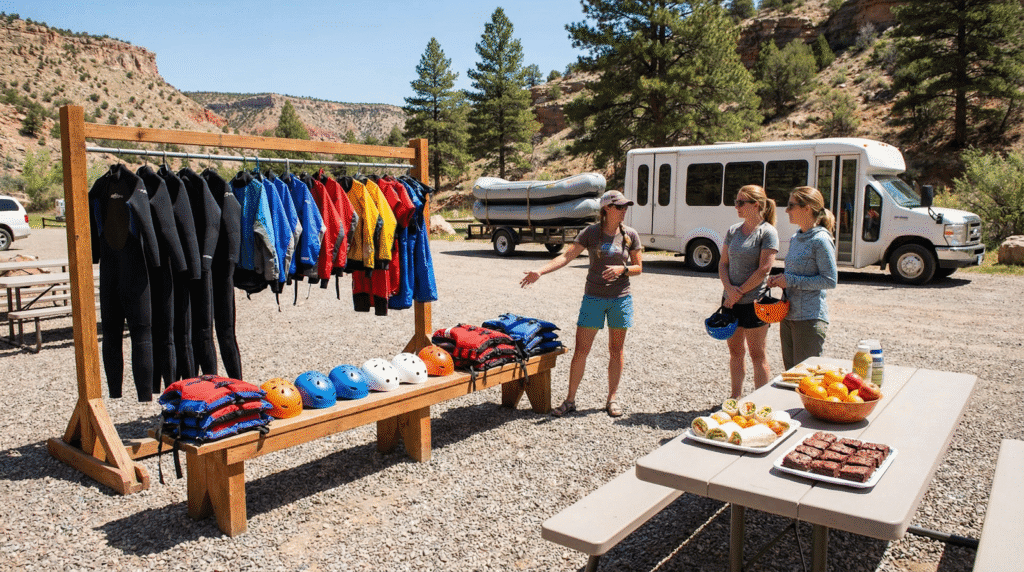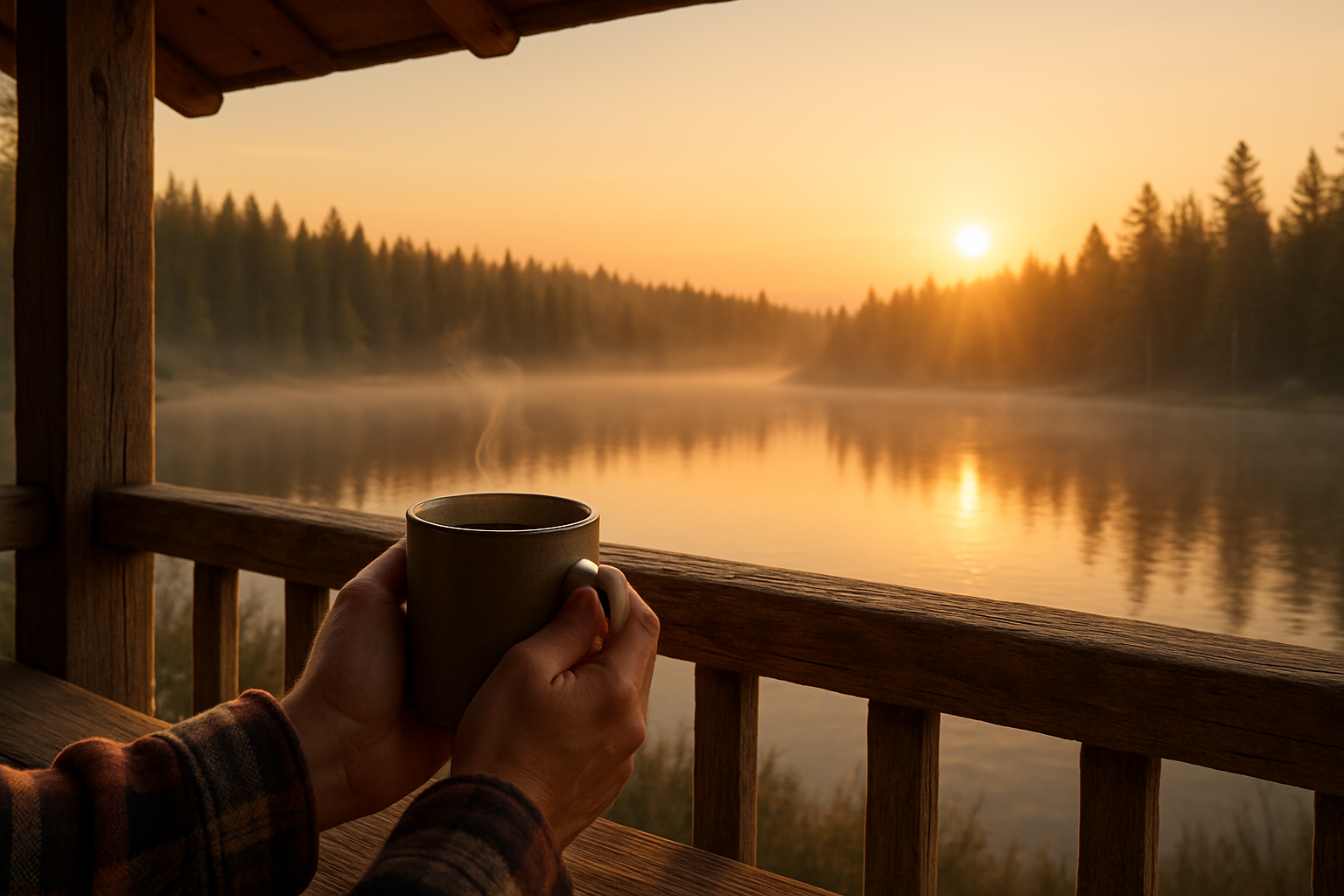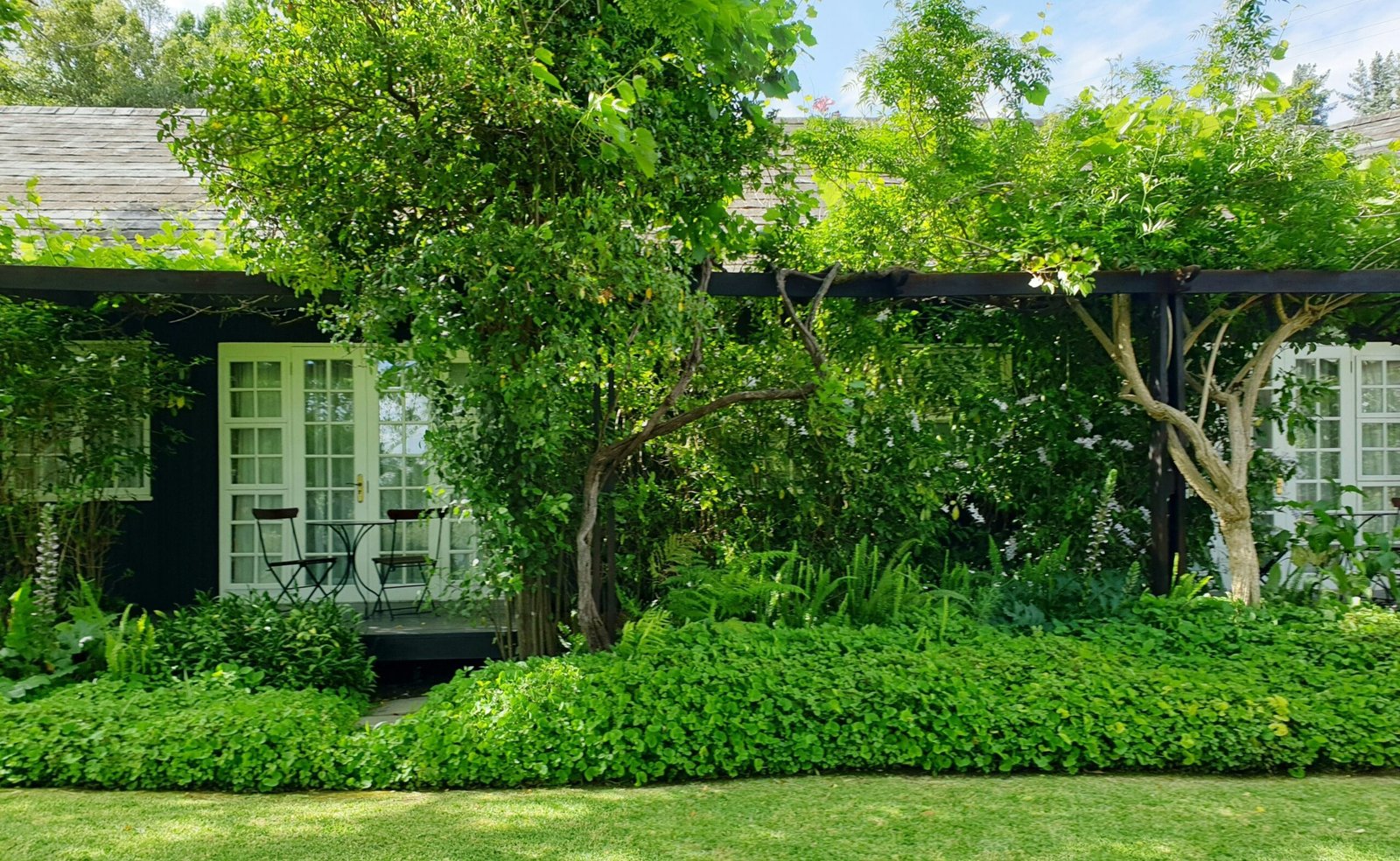Colorado’s white-water rafting scene lures nearly 500,000 adventure-seekers each year—and it’s clear why. Picture rafts punching through sandstone canyons, cool spray on your face, laughter ricocheting off the walls. Feeling excited but a tad nervous? We get it. In 2024, guides with Echo Canyon River Expeditions and other outfitters logged about 497,000 commercial user days, channeling $209 million into river towns, according to the Colorado River Outfitters Association. This quick guide shows you how to pick the right class of rapids, gear up, and turn your first run into a headline moment of any Colorado vacation.
Step 1: Choose the right difficulty level
White-water rivers use a Class I–V scale established by American Whitewater. The higher the number, the stronger the current feels to you and your guide.
- Class I–II (Scenic float): Calm current with a few playful waves. Echo Canyon welcomes children as young as 4 and anyone who wants to stay mostly dry.
- Class II–III (Bighorn Sheep Canyon): Splashy, straightforward rapids that entertain most families with kids ages 6 and up.
- Class IV–V (Royal Gorge during peak runoff): Steep drops and quick maneuvers suited to confident swimmers ages 13 and older.
Ask yourself:
- How comfortable is everyone in moving water?
- Does anyone have back, joint, or mobility concerns that make sudden jolts risky?
- Will you arrive during June snowmelt, when flows can spike and turn a Class III into a Class IV overnight?
Share these answers with your outfitter. Their job is to pair your crew with a stretch that thrills without overwhelming first-timers. Echo Canyon Rafting Experience’s trip-planning FAQ shows how this plays out on the water by describing Bighorn Sheep Canyon as class III whitewater with several major rapids on the half-day trip and more than 20 on the full-day, while noting that the Royal Gorge full-day is a nationally ranked top-10 river run recommended only for strong swimmers in their early teens and up. Reading detailed guidance like that before you book helps you sanity-check whether your group really belongs on a mellow scenic float, an intermediate “sweet spot” run, or the Gorge’s most intense lines.
Step 2: Decide how many hours of river time you want
Think in terms of time on the water, not just on the clock.
Half-day sampler (about 3 hours door-to-door, 6–8 river miles). Perfect before an afternoon zip-line or train ride; Echo Canyon runs departures at 9 a.m. and 1 p.m. most of the summer.
Full-day immersion (roughly 6 hours total, 18–20 river miles, riverside lunch included). You settle into a steady paddling rhythm, take on bigger rapids, then refuel on the beach before tackling the afternoon stretch.
Multi-day expedition (2–3 days, camp under canyon stars). Guides haul the kitchen, tents, and dry bags, so you can fall asleep to the river’s hush and wake up with sunrise coffee.
Match the duration to the rest of your Colorado plans: half-days pair easily with zip lines or the Royal Gorge Route Railroad, while longer runs trade convenience for deeper wilderness and richer stories.
Step 3: Know exactly what your fee buys

Price tags can look similar across outfitters, yet the fine print may add $20–$40 for gear or meals. Echo Canyon River Expeditions folds these common extras, including free wetsuits, splash jackets, and river-shoe rentals, into its base rate:
- Safety gear: Coast-Guard-approved life jacket and helmet sized during check-in.
- Cold-weather clothing: Wetsuits, splash jackets, and river shoes are included, not the usual $10–$15 rental.
- Riverside lunch on full-day trips: Build-your-own wraps, fresh fruit, and brownies set out a few steps from the water.
- Shuttle transfers: Company bus covers the 10-minute ride to the put-in and returns you from the take-out, so your car stays dry.
- Professional guides: Certified in swift-water rescue and first aid, they handle navigation, safety briefings, and corny jokes.
Optional add-ons such as action photos, GoPro rentals, or après-raft meals at the 8 Mile Bar & Grill carry separate price tags, so ask at booking if you want souvenirs or snacks waiting when you step off the bus.
Step 4: Pack for water, sun, and swing-season weather
Expect to be both wet and under intense alpine sunshine. In early June, the Arkansas River sits in the mid-50s °F; by late July it reaches the low 60s °F, which is still cool enough to chill you on a shady stretch (raftecho.com). We suggest pairing a synthetic swimsuit or quick-dry shorts with a light rash guard, because cotton hangs heavy and steals body heat once soaked.
Footwear matters just as much as layers. Strap-on river sandals or an old pair of sneakers stay put if the raft bumps you into thigh-deep water. Flip-flops drift away in seconds.
According to Echo Canyon River Expeditions’ blog on water flows, Colorado’s Royal Gorge often posts a UV index of 9 or higher on cloudless summer afternoons, so pack SPF 50 sunscreen, lip balm, and a ball cap that can cinch tight under your helmet. Toss a thin fleece or wind shirt into your dry bag; mountain thunderstorms can drop the temperature by 20 °F in minutes.
Finally, share any asthma, allergy, or recent-surgery notes with your reservation team before arrival. Guides carry first-aid kits, yet they need your details to plan the safest response. Most outfitters, Echo Canyon included, email a checklist once you book. Scan it the night before so nothing essential stays behind on the hotel floor.
Step 5: What your day actually looks like
We suggest arriving 45 minutes before departure so the Echo Canyon crew can move you through waivers and fit a snug PFD; rushing paperwork saps first-rapid excitement. After a quick helmet fit and a three-minute paddle demo, you’ll hop on a bus for the 10-minute ride to the Bighorn Sheep Canyon put-in.
At the shore, guides deliver a five-minute safety talk, then launch the rafts. The half-day run gives you 1½–2 hours on the water, a blend of calm pools for photos and splashy Class III drops such as Three Rocks. High-fives and oar clacks echo from the canyon walls.
A truck meets the boats at the take-out, and you return to base roughly 3 hours after check-in, swapping stories while you peel off wetsuits and scroll through the day’s photo reel. Throughout the trip, guides watch flows, coach paddle timing, and share corny jokes to prove that river safety can stay fun.
Step 6: How to spot a safety-first outfitter
Colorado Parks and Wildlife requires every commercial raft guide to log 50 on-river training hours, hold CPR and basic first-aid cards, and pass a written exam. According to Echo Canyon River Expeditions, its guides complete about 100 hours on the water plus four to five weeks of classroom and rescue drills before guiding guests.
When you arrive, watch for subtle proof that the company walks the talk: helmets without dents, PFD straps that tighten smoothly, and a staffer who invites questions rather than rushes the briefing. Ask about age limits, water-level cut-offs, and “what-if” scenarios. A professional crew will quote the policy, such as “Royal Gorge closes above 3,200 CFS,” instead of shrugging.
Transparency is a safety feature. Echo Canyon also publishes its training standards and equipment checks on its website and encourages would-be rafters to call if anything is unclear. If another outfitter cannot give similar answers, keep shopping until you find one that can.
Step 7: Turn one river run into a full Royal Gorge mini-vacation
The Arkansas River drops its last big rapids only 10 minutes from a cluster of adventures that pair naturally with your paddle day. If you still have adrenaline to burn, walk across the highway and clip into the Royal Gorge Zipline course, where 13 lines whisk you 1,200 feet above the foothills in about two hours. Prefer rails to cables? Tickets for the Royal Gorge Route Railroad start at around $99 per adult, and the 1-hour-50-minute canyon loop includes lunch or dinner service.
To linger longer, check into Royal Gorge Cabins, Echo Canyon’s modern wood-and-glass suites and glamping tents a stone’s throw from the put-in. Cabins sleep two to ten guests and sit roughly one hour from Colorado Springs, so you can wake to Sangre de Cristo peaks instead of city noise.
Conclusion
Cap the day at the seasonal 8 Mile Bar & Grill across the parking lot, where locally raised bison burgers, Colorado craft beers, and patio fire tables taste even better when you’re still wearing a bit of river spray. Swap GoPro highlights with friends, and your “quick rafting stop” suddenly feels like a full-blown Colorado story.




